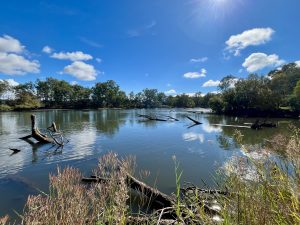When we monitor the nest boxes we have installed in the regional parks for endangered species, the most common issue we find is that wild European honey bees have taken up residence.
This has always been a problem for us, as bees in residence obviously means endangered arboreal mammals like Squirrel Gliders are not! But now there is even more need to be concerned about feral bee populations: the threat of Varroa mite.
Varroa mites (Varroa destructor and V. jacobsoni) are tiny red-brown external parasites, and the most serious global pest of honey bees. If the mite were to establish in Australia, European honey bees and the pollination services they provide could be reduced by 90-100 per cent, resulting in losses of over $70 million a year and decimation of our apiary and horticulture/cropping industries.
In June this year, Varroa mites were detected in surveillance hives in Newcastle (NSW). By September, 99 premises in NSW had bees infested with varroa mite. In an effort to stop the spread of the mites, the NSW Department of Primary Industries has euthanised more than 4000 hives to date, and strict controls on the movement of hives are in place.
Because Varroa mites spread so quickly and easily between bee populations, wild bees are a potential uncontrolled source of spread. This is where we can all help.
The Victorian Recreational Beekeepers Association (VRBA) has created a page (beeWatch) for people to register information about the locations of wild (feral) and unmanaged hives. This includes beehives found in bird boxes, trees and knolls, nest boxes, disused outbuildings, chimneys, or wall cavities.
The information collected will be supplied to Agriculture Victoria and the Department of Jobs, Precincts and Regions (DJPR) in case Varroa mite reaches Victoria.
Please report wild bees if you see them. To report a wild hive in your area, please visit: https://beewatch.au/form/






